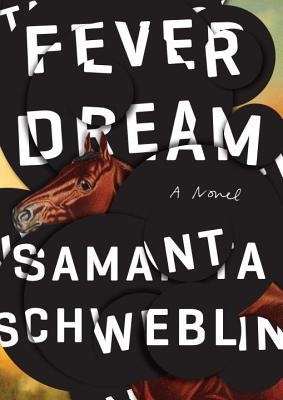This is the last article you can read this month
You can read more article this month
You can read more articles this month
Sorry your limit is up for this month
Reset on:
Please help support the Morning Star by subscribing here
Fever Dream
By Samanta Schweblin
(Oneworld, £7.99)
WHEN does a dream became a nightmare? How to make sense of a world that rapidly turns into an apocalyptic hallucination? In Fever Dream, young Argentinian writer Samanta Schweblin has managed to skilfully weave a story that is at the same time frightening, eerie and totally mesmerising.

Amanda, the main character, is a young woman who takes her small daughter Nina to a house in the countryside of Argentina for a summer holiday while her husband continues to work during the week in the oppressive city.
There is also Carla, a woman who has rented a nearby house to spend her holidays there with young son David. Both women sunbathe with their children in Amanda’s backyard. All seems to be perfectly normal.
But things are not quite right. Amanda appears to be communicating with a ghost who speaks with the voice of David.
But why is she incessantly talking with him? Is his voice real or does it exist only in her head?
It is through that otherworldly dialogue that we eventually learn what is happening to people and animals in this apparently normal agricultural town.
Ducks die mysteriously, thoroughbred horses disappear from one day to the next, dogs behave erratically. There are uncommonly numerous deformed children, wells that appear poisoned, toxic substances lurking in the nearby soya fields.
Something is making everybody ill and Amanda doesn't know how to best protect her daughter, who appears unaware of it all.
Amanda uses a “rescue distance,” an imaginary line that separates her from Nina, a sort of umbilical chord she constantly uses to calculate the distance and time she has to save Nina from any impending accident.
When David asks Amanda about the rescue distance, she replies: “It changes depending on the situation. For example, in the first hours we spent here, I wanted Nina close by at all times. I needed to know how many exits the house had, find the areas of the floor with the most splinters, see if the creaky stairs posed any kind of danger.”
And after Clara tells Amanda of a strange incident in which David nearly dies from drinking a poisonous substance near their holiday house, the story rapidly descends into a horror nightmare from which nobody is able to wake up.
Fever Dream’s narrative is informed by the fearful statistics of the ever-growing levels of land and water poisoning and unprecedented death rates among the rural populations in Argentina. Indiscriminate use of pesticides and fungicides by large agro-multinationals engaged in the lucrative soya monoculture is systematically destroying the biodiversity of the pampa.
Schweblin deals with those fears and angst in a way that is compelling and at the same time horrifying.
It is an effective novel written by one of the most exciting and promising new Latin American writers.
Fever Dream is an intelligent thriller that combines a ghost story with growing ecological anxieties and ordinary parental fears and concerns.
It is a book that will linger on long after you put it down. A must-read.









